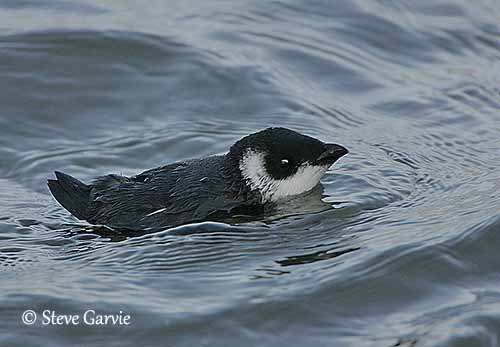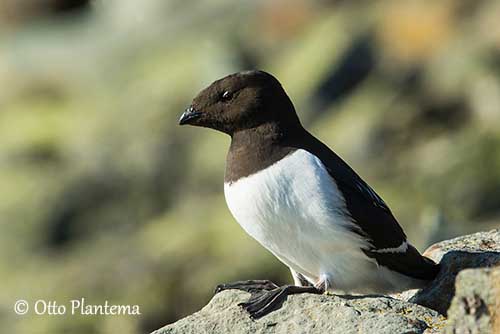

SVALBARD ARCHIPELAGO
AND JAN MAYEN ISLAND
BIRD SPECIES
Norway Territories in the Arctic Ocean
List of the bird species:
Sources: Avibase (Lepage Denis)
Alpine Swift - Tachymarptis melba - Martinet à ventre blanc
American Golden Plover – Pluvialis dominica – Pluvier bronzé
Arctic Redpoll or Hoary Redpoll - Acanthis hornemanni - Sizerin blanchâtre
Arctic Tern - Sterna paradisaea – Sterne arctique
Atlantic Puffin – Fratercula arctica – Macareux moine
Barn Swallow - Hirundo rustica - Hirondelle rustique
Barnacle Goose - Branta leucopsis - Bernache nonette
Bar-tailed Godwit - Limosa lapponica - Barge rousse
Barrow’s Goldeneye - Bucephala islandica - Garrot d’Islande
Black-browed Albatross - Thalassarche melanophris - Albatros à sourcils noirs
Black-headed Gull – Chroicocephalus ridibundus – Mouette rieuse
Black-legged Kittiwake - Rissa tridactyla - Mouette tridactyle
Black-tailed Godwit - Limosa limosa - Barge à queue noire
Black-throated Diver (Loon) - Gavia arctica - Plongeon arctique
Blackcap – Sylvia atricapilla – Fauvette à tête noire
Black Guillemot - Cepphus grylle - Guillemot à miroir
Bohemian Waxwing - Bombycilla garrulous - Jaseur boréal
Bonaparte’s Gull - Chroicocephalus philadelphia - Mouette de Bonaparte
Brambling - Fringilla montifringilla - Pinson du Nord
Brant Goose - Branta bernicla - Bernache cravant
Broad-billed Sandpiper - Limicola falcinellus - Bécasseau falcinelle
Buff-bellied Pipit - Anthus rubescens - Pipit farlousane
Buff-breasted Sandpiper - Tryngites subruficollis - Bécasseau roussâtre
Canada Goose - Branta canadensis - Bernache du Canada
Carrion Crow - Corvus corone - Corneille noire
Common Blackbird - Turdus merula - Merle noir
Common Chiffchaff - Phylloscopus collybita - Pouillot véloce
Common Coot - Fulica atra - Foulque macroule
Common Crane – Grus grus – Grue cendrée
Common Cuckoo - Cuculus canorus - Coucou gris
Common Eider - Somateria mollissima - Eider à duvet
Common Goldeneye - Bucephala clangula – Garrot à œil d’or
Common House Martin - Delichon urbicum - Hirondelle de fenêtre
Common Kestrel – Falco tinnunculus – Faucon crècerelle
Common Moorhen – Gallinula chloropus - Gallinule poule d’eau
Common Murre - Uria aalge - Guillemot de Troïl
Common Raven – Corvus corax - Grand corbeau
Common Redpoll - Acanthis flammea - Sizerin flammé
Common Redshank - Tringa totanus - Chevalier gambette
Common Redstart - Phoenicurus phoenicurus - Rougequeue à front blanc
Common Ringed Plover - Charadrius hiaticula - Pluvier grand-gravelot
Common Scoter - Melanitta nigra - Macreuse noire
Common Shelduck - Tadorna tadorna - Tadorne de Belon
Common Snipe – Gallinago gallinago - Bécassine des marais
Common Starling - Sturnus vulgaris - Etourneau sansonnet
Common Swift - Apus apus - Martinet noir
Common Tern - Sterna hirundo - Sterne pierregarin
Common Wood Pigeon - Columba palumbus - Pigeon ramier
Curlew Sandpiper - Calidris ferruginea - Bécasseau cocorli
Dunlin - Calidris alpina - Bécasseau variable
Dunnock – Prunella modularis – Accenteur mouchet
Egyptian Vulture – Neophron percnopterus – Vautour percnoptère
Eurasian Collared-Dove - Streptopelia decaocto – Tourterelle turque
Eurasian Curlew - Numenius arquata - Courlis cendré
Eurasian Dotterel - Charadrius morinellus - Pluvier guignard
Eurasian Oystercatcher – Haematopus ostralegus – Huitrier pie
Eurasian Rock Pipit - Anthus petrosus - Pipit maritime
Eurasian Teal - Anas crecca - Sarcelle d’hiver
Eurasian Wigeon - Anas penelope - Canard siffleur
Eurasian Woodcock - Scolopax rusticola - Bécasse des bois
European or Eurasian Golden Plover - Pluvialis apricaria - Pluvier doré
European Pied Flycatcher - Ficedula hypoleuca - Gobemouche noir
European Robin - Erhitacus rubecula - Rouge-gorge familier
European Storm-petrel – Hydrobates pelagicus – Océanite tempête
European Turtle-Dove - Streptopelia turtur - Tourterelle des bois
Fieldfare - Turdus pilaris - Grive litorne
Franklin’s Gull - Leucophaeus pipixcan - Mouette de Franklin
Gadwall - Anas strepera - Canard chipeau
Garden Warbler - Sylvia borin - Fauvette des jardins
Garganey - Anas querquedula - Sarcelle d’été
Glaucous Gull - Larus hyperboreus - Goéland bourgmestre
Goosander - Mergus merganser - Harle bièvre
Great Black-backed Gull – Larus marinus – Goéland marin
Great Egret - Egretta alba - Grande aigrette
Great Grey Shrike - Lanius excubitor - Pie-grièche grise
Great Northern Diver or Common Loon - Gavia immer - Plongeon imbrin
Great Skua - Stercorarius skua - Grand labbe
Great Snipe - Gallinago media - Bécassine double
Great Tit – Parus major – Mésange charbonnière
Greater Scaup - Aythya marila - Fuligule milouinan
Greater White-fronted Goose - Anser albifrons - Oie rieuse
Green Sandpiper - Tringa ochropus - Chevalier culblanc
Grey Heron – Ardea cinerea – Grey Heron
Greylag Goose - Anser anser - Oie cendrée
Grey Plover - Pluvialis squatarola - Pluvier argenté
Gyrfalcon - Falco rusticolus - Faucon gerfaut
Harlequin Duck - Histrionicus histrionicus - Arlequin plongeur
Hawfinch – Coccothraustes coccothraustes – Grosbec casse-noyaux
Hen Harrier – Circus cyaneus cyaneus – Busard St Martin
Herring Gull – Larus argentatus – Goéland argenté
Hooded Crow - Corvus cornix - Corneille mantelée
Hoopoe - Upupa epops - Huppe fasciée
Horned Grebe - Podiceps auritus - Grèbe esclavon
Horned Lark - Eremophila alpestris – Alouette hausse-col
Iceland Gull - Larus glaucoides - Goéland arctique
Ivory Gull - Pagophila eburnea - Mouette blanche
Jack Snipe - Lymnocryptes minimus - Bécassine sourde
King Eider - Somateria spectabilis - Eider à tête grise
Lanceolated Warbler - Locustella lanceolata - Locustelle lancéolée
Lapland Longspur - Calcarius lapponicus - Bruant lapon ou Plectrophane lapon
Lesser Black-backed Gull – Larus fuscus – Goéland brun
Lesser Kestrel - Falco naumanni - Faucon crécerellette
Little Auk or Dovekie - Alle alle - Mergule nain
Little Gull - Hydrocoloeus minutus - Mouette pygmée
Little Stint - Calidris minuta - Bécasseau minute
Long-eared Owl – Asio otus - Hibou moyen-duc
Long-tailed Duck - Clangula hyemalis - Harelde boréale
Long-tailed Jaeger - Stercorarius longicaudus - Labbe à longue queue
Mallard – Anas platyrhynchos – Canard colvert
Meadow Pipit - Anthus pratensis - Pipit farlouse
Merlin - Falco columbarius - Faucon émerillon
Mew Gull - Larus canus - Goéland cendré
Northern Fulmar – Fulmarus glacialis – Fulmar boreal
Northern Gannet - Morus bassanus - Fou de Bassan
Northern Lapwing – Vanellus vanellus - Vanneau huppé
Northern Pintail - Anas acuta - Canard pilet
Northern Shoveler - Anas clypeata - Canard souchet
Northern Wheatear - Oenanthe oenanthe - Traquet motteux
Pacific Golden Plover - Pluvialis fulva - Pluvier fauve
Parasitic Jaeger or Arctic Skua - Stercorarius parasiticus - Labbe parasite
Pectoral Sandpiper - Calidris melanotos - Bécasseau tacheté
Peregrine Falcon - Falco peregrinus - Faucon pèlerin
Pink-footed Goose - Anser brachyrhynchus - Oie à bec court
Pomarine Skua or Jaeger - Stercorarius pomarinus - Labbe pomarin
Purple Sandpiper - Calidris maritima - Bécasseau violet
Razorbill - Alca torda - Petit Pingouin (Pingouin torda)
Red-breasted Flycatcher - Ficedula parva - Gobemouche nain
Red-breasted Merganser - Mergus serrator - Harle huppé
Red Crossbill - Loxia curvirostra - Bec-croisé des sapins
Red Knot - Calidris canutus - Bécasseau maubèche
Red-necked Grebe - Podiceps grisegena - Grèbe jougris
Red-necked Phalarope - Phalaropus lobatus - Phalarope à bec étroit
Red Phalarope - Phalaropus fulicarius - Phalarope à bec large
Red-throated Diver (Loon) - Gavia stellata - Plongeon catmarin
Redwing - Turdus iliacus - Grive mauvis
Ring-billed Gull - Larus delawarensis - Goéland à bec cerclé
Ring Ouzel - Turdus torquatus - Merle à plastron
River Warbler (or Eurasian RW)- Locustella fluviatilis - Locustelle fluviatile
Rock Ptarmigan - Lagopus muta - Lagopède alpin
Ross’s Gull - Rhodostethia rosea - Mouette de Ross
Rough-legged Buzzard - Buteo lagopus - Buse pattue
Ruddy Shelduck - Tadorna ferruginea - Tadorne casarca
Ruddy Turnstone - Arenaria interpres - Tournepierre à collier
Ruff - Philomachus pugnax - Combattant varié
Rustic Bunting - Emberiza rustica - Bruant rustique
Sabine’s Gull - Xema sabini - Mouette de Sabine
Sand Martin - Riparia riparia - Hirondelle de rivage
Sanderling – Calidris alba - Bécasseau sanderling
Sandwich Tern - Thalasseus sandvicensis - Sterne caugek
Sedge Warbler - Acrocephalus schoenobaenus - Phragmite des joncs
Sharp-tailed Sandpiper - Calidris acuminata - Bécasseau à queue pointue
Short-eared Owl - Asio flammeus - Hibou des marais
Sky Lark – Alauda arvensis – Alouette des champs
Snow Bunting - Plectrophenax nivalis - Bruant des neiges ou Plectrophane des neiges
Snowy Owl - Bubo scandiacus – Harfang des neiges
Solitary Sandpiper – Tringa solitaria – Chevalier solitaire
Songthrush – Turdus philomelos – Grive musicienne
Sooty Shearwater - Puffinus griseus - Puffin fuligineux
Spectacled Eider - Somateria fischeri - Eider à lunettes
Spotted Flycatcher - Muscicapa striata - Gobemouche gris
Spotted Redshank - Tringa erythropus - Chevalier arlequin
Spotted Sandpiper - Actitis macularius - Chevalier grivelé
Steller’s Eider - Polysticta stelleri - Eider de Steller
Temminck’s Stint - Calidris temminckii - Bécasseau de Temminck
Thick-billed Murre - Uria lomvia - Guillemot de Brünnich
Tree Pipit - Anthus trivialis - Pipit des arbres
Tufted Duck - Aythya fuligula - Fuligule morillon
Tundra Swan - Cygnus columbianus - Cygne de la toundra
Velvet Scoter - Melanitta fusca - Macreuse brune
Water Rail - Rallus aquaticus - Râle d’eau
Western Yellow Wagtail - Motacilla flava - Bergeronnette printanière
Whimbrel – Numenius phaeopus – Courlis corlieu
Whinchat - Saxicola rubetra - Tarier des prés
White-rumped Sandpiper - Calidris fuscicollis - Bécasseau à croupion blanc
White-tailed Sea-Eagle – Haliaeetus albicilla – Pygargue à queue blanche
White Wagtail - Motacilla alba - Bergeronnette grise
Whooper Swan – Cygnus Cygnus – Cygne chanteur
Willow Ptarmigan (or Grouse) - Lagopus lagopus - Lagopède des saules
Wilson’s Storm-Petrel - Oceanites oceanicus - Océanite de Wilson
Yellow-billed Loon or White-billed Diver - Gavia adamsii - Plongeon à bec blanc
Yellowhammer - Emberiza citrinella - Bruant jaune
Svalbard and Jan Mayen are Norwegian territories of the Arctic Ocean.
Svalbard or Spitzberg is a group of islands which is part of the Kingdom of Norway. It is situated at the North of mainland Europe. Svalbard forms an archipelago on the Arctic Ocean, situated at the extreme N of Norway. There are three large islands and a few others.
Jan Mayen Island is part of the Kingdom of Norway too. This is an Arctic Island of volcanic origin, with some areas covered by glaciers. This mountainous island is situated at 600 km NE of Iceland, 500 km E of C Greenland, and 1000 km W to the North Cape, Norway.
Svalbard is mainly covered by snow and glaciers, although it features an Arctic climate with higher temperatures than other areas at similar latitudes.
This region is the breeding ground of numerous seabirds, but several mammals including polar bears, reindeer, Arctic foxes and marine mammals are present too.
National parks and nature reserves protect the untouched but fragile natural environment. Svalbard is an archipelago of 63,000 km², with infinite landscapes including mountains, plains and seas of ice.
Jan Mayen is a volcanic island where the high Beerenberg Volcano (2,277 metres) dominates the northern part of the island. The southern part is narrow and flat, with the highest elevation at 769 metres.
The island is identified as an Important Bird Area by BirdLife International. This is a good breeding site for numerous large seabirds.
The climate is similar to Greenland and Svalbard. The island is extremely cloudy with little sunshine, even during the long polar days.
The Little Auk or Dovekie (Alle alle) is probably the most widespread species throughout Svalbard Archipelago with more than 2,000,000 pairs. At least 164 bird species can be observed in Svalbard, with about 30 abundant and / or breeding species. Numerous birds are occasionally present as visitors and vagrants.
Formerly, the birds suffered heavy hunting pressure from fishermen, trappers and crews of vessels searching for down, eggs and birds, and especially geese.
But now, hunting is prohibited except for six abundant bird species.
The main threats are today pollution and global warming involving changes in food resources, and trapping by fishing nets.
However, Svalbard and Jan Mayen gather high concentration of birds in N Atlantic. While summer is coming, hundreds of thousands migratory birds, mainly seabirds, breed on these islands.
Text by Nicole Bouglouan
Sources :
Wikipedia, the free encyclopaedia

Picture by Otto Plantema
Trips around the world